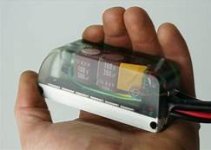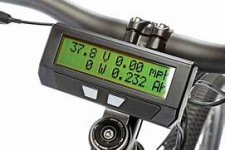racingame said:
I saw CAv2 used to connect to the controller being just a "display" instrument, while the CAv3 directly connects to all the components, and also the controller.
THey both connect the same way, just that the v3 has several sensor inputs, and more control routines/settings to deal with them to more precisely customize the control of your system to exactly how you want it to operate, and an analog throttle control output vs a cutoff-throttle-output.
From what I could understand, you are not just able to display the inputs taken from the various components, but you can also change the parameters to directly control them from the CAv3 now. The CAv3 is basically a proxy, so since all sensors inputs have to go through it, it's able to read all values directly instead that asking to the controller and can also either validate them or even change them before those data are sent to the actual controller, is that right?
Neither one has any communication with the controller, period. Neither can ask the controller for anything at all.
All they do is take the sensor inputs and display various standard info (watts, volts, amps, etc) and some customizable stuff depending on the version. V3 has more inputs than v2 (which is just the shunt, IIRC, for volts and amps and any derivable info).
Then they process that info based on your settings and send it out to the throttle input of the controller in the case of the v3, and IIRC v2 just grounds out the throttle signal to disable the controller from doing anything when a limit is exceeded.
NO data is sent to the controller, none of the sensors that go into the CA have any of their info going to the controller. Only the throttle output voltage from the v3 goes to the cntroller.
FWIW, controllers that do have any kind of communication all have their own ways of doing it, no standards, so it'd be tough to make one device to talk to all of them (especially since they're all proprietary so you'd have to figure out each new model as it comes out every day/week/month/etc and then update the CA to make it work with those. Not practical, even if it was possible.
The thing is that, as you said, this sounds redundant to me, since the CAv3 kinda acts like a controller on his own, so there are basically both the controller and the CAv3 telling the motor parts what to do.
Not really. The CA tells the controller when (v2, v3) and how much (v3) to apply throttle. The controller (if it's got any smarts of it's own) decides what to do about that, based on any other inputs it has.
The cotnroller, dumb or smart, does all the motor control, power handling, etc. If it's a smart controller (like the PR) it can have a lot of stuff that is customizable, to make it ride the way you want it to.
If it's a dumb on elike a tpiypcal generic eibke controller there's not much if anything you can customize, it just does whatever it was built to do when you use the throttle, and if you don't like that you eitehr get used to it and/or learn to handle the thorttle well enough to make it do what you want, or you toss it out and buy a different one until you find one that works the way you like.

BUT: that's where the CA comes in; the v3 you set it up teh way you'd like it to run, then it uses the throttle input to the controller to run it the way you want to. YOu can think of it as adding a "brain" to a dumb controller.

What association there is between GrinTech Phaserunner and ASI controllers
the PR is a custom-packaged ASI, somewhat reengineered by Grin.
In short practical terms what's the difference between the CA3-DP and CA3-DPS?
The S just means you have a speed sensor on the wheel instead of using the hall sensor from a DD hubmotor in a wheel.
If you don't have a DD hubmotor in a wheel you require the S version or the CA can't detect bike speed, only motor speed (which is not useful for most info you want to gather/control with).
The SA version is the same as the DP except it uses an external shunt you put between your battery and controller; it's for controllers that don't have a CA plug (most don't).
Any guide if I would like to set up a Bafang BBSHD motor by myself both for the Phaserunner controller config part and the CAv3 "display" config part?
There's sevearl threads about builds like that, if you look for BBS* and Phaserunner in the title. Could be spelled as one or two words.
Otherwise, there's the UUG by Teklektik, intended to setup *any* system from scratch, which needs to be followed from page 1 to the end of setup (if you skip stuff you think you're not using, there will be things not setup teh way you expect as its' often interrelated).




